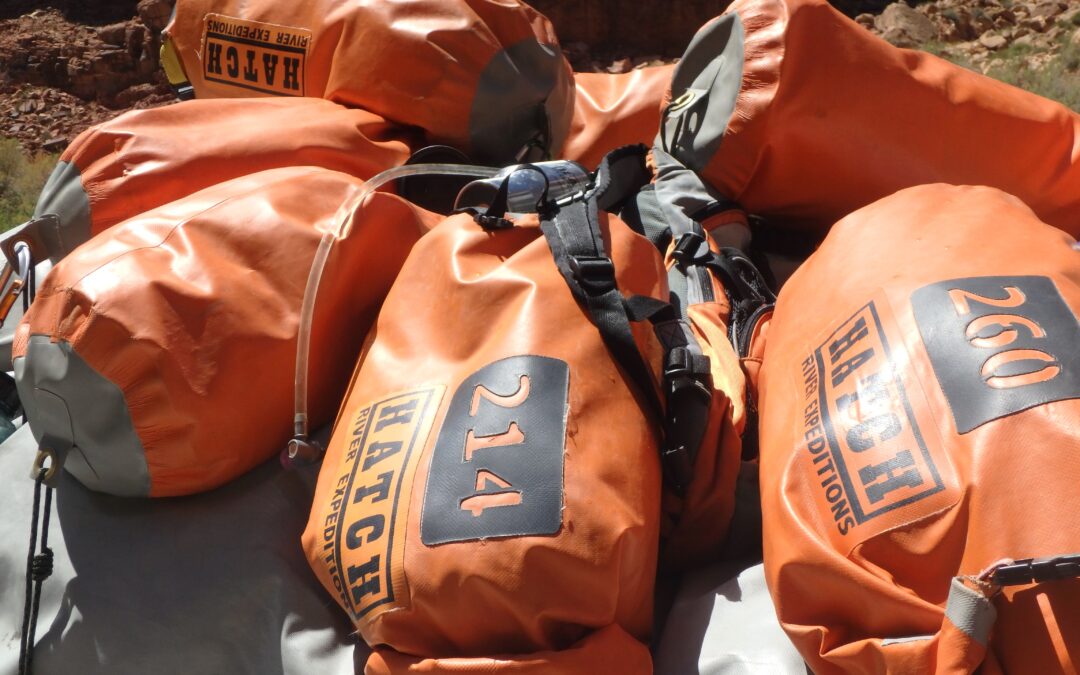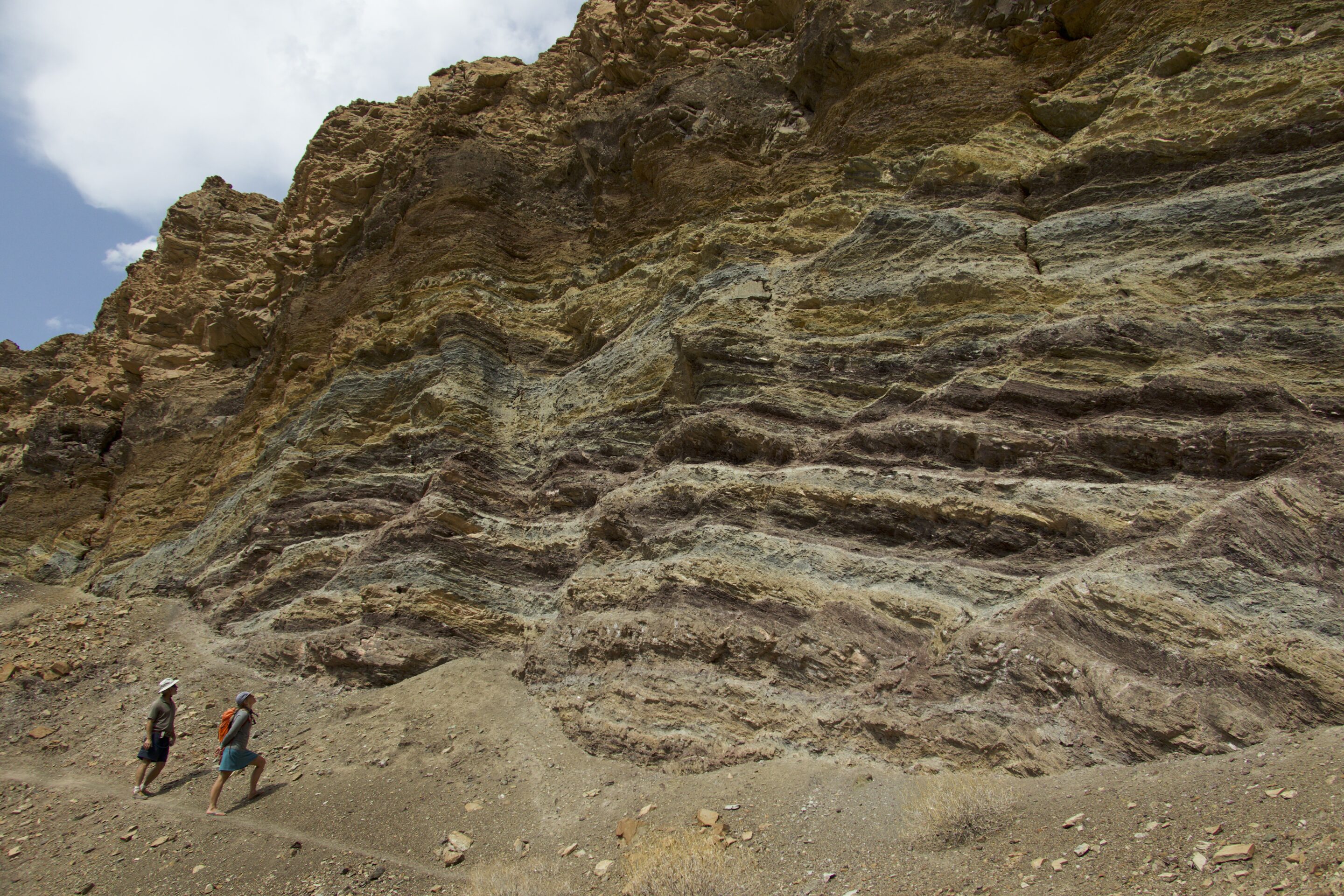The question we hear most often is: “What do I need in my day bag today?” The easiest answer? Be like a Boy Scout: Always be prepared.


The Colorado River cuts through an uplifted portion of the Colorado Plateau, giving those who travel through it the opportunity to get an up-close look at each rock layer they encounter—each deposited in a different geologic time. The oldest of these rocks are nearly 2 billion years old, which means that in this one relatively small sliver of canyon, rocks representing roughly 40% of earth’s history are exposed to human examination.
At the beginning of your Hatch river trip, you’ll be traveling through layer after layer of sedimentary rocks.
These are rocks made of sand, silt, or other sediments that eventually compress under the weight of the layers above them and turn into solid rock. In the Grand Canyon (and other parts of the southwest), many of these rocks are beautiful hues of bright red because the sediments they’re made of contain iron that rusts in the open air.
To remember the names of these layers, geologists have come up with a mnemonic:
“Know the canyon’s history, study rocks made by time.”
The first letter of each word in this phrase corresponds to the first letter of a layer or group of rocks within the Grand Canyon.
Know – Kaibab Limestone
The – Toroweap Formation
Canyon’s – Coconino Sandstone
History, – Hermit Shale
Study – Supai Formation
Rocks – Redwall Limestone
Made – Muav Limestone
By – Bright Angel Shale
Time – Tapeats Sandstone
This clever phrase gets you only as far as a section of the canyon known as the “Great Unconformity,” though. At this point, the horizontal sedimentary layers listed above sit directly on top of a section of uplifted and tilted sedimentary rocks known as the Grand Canyon Supergroup in some areas and directly on top of the Vishnu Schist and Zoroaster Granite (metamorphic rocks that once were the roots of an enormous mountain range) in others.
This contact is called an “unconformity” because it marks a place where so much erosion occurred before a new layer of rock formed (in this case the Tapeats Sandstone), that we are actually missing time from our geologic record. This particular unconformity is known as the “Great Unconformity,” because so much time is unaccounted for that mountains could have been built and then completely eroded away within the period that is missing.
The time for which we don’t have records varies depending upon what rock the Tapeats rests against. In some places, there are only 175 million years of time missing from our record. However, where the Tapeats Sandstone (550 million years old) comes in contact with the Vishnu Basement Rocks (1.7 billion years old), we are missing more than 1.2 billion years of geologic record. For comparison, modern humans have only been around for approximately 200 thousand years.
***
Even if you’re no geologist, you have to admit it’s pretty cool sitting among all that history!
Doing research before your trip can help you appreciate these rock layers throughout Grand Canyon. We have a page dedicated to helping you prep for your trip, by providing great resources to learn about all things Grand Canyon.
***
Ready to see these rock layers in person? Book a trip online or call our office and let’s get you on the river!
Lizards in the Grand Canyon If you’ve ever been anywhere in the Southwest, chances are you’ve seen a lizard. These little reptiles have become nearly synonymous with the desert landscapes of the region. Walk into a gift shop in Arizona and you’ll find lizards on...
It may surprise some to learn that toads can thrive in desert environments, but the Red Spotted Toad thrives within the Grand Canyon…
The Grand Canyon is home to an incredible variety of wildlife, some of which only live in the Grand Canyon, like the Grand Canyon Rattlesnake